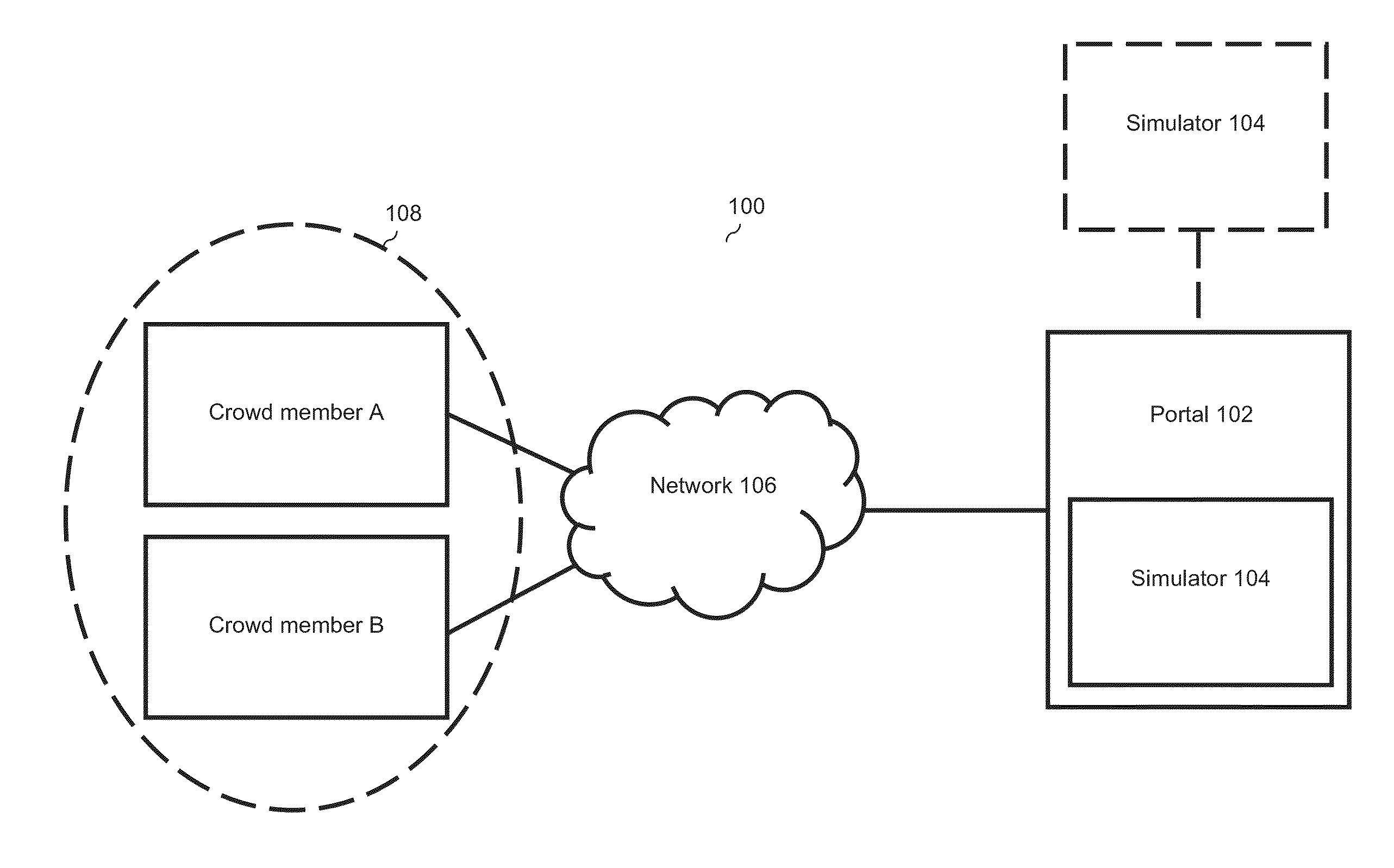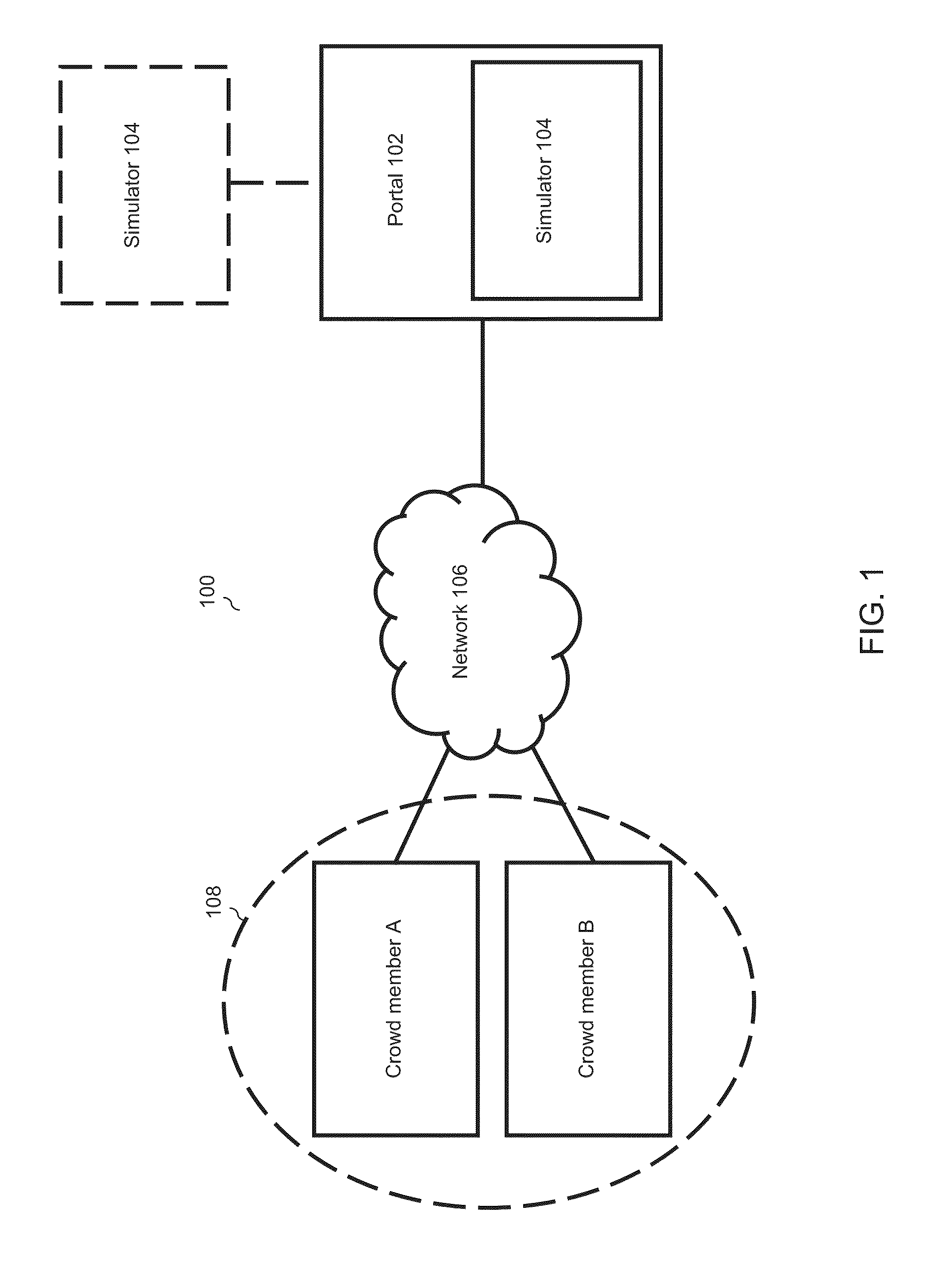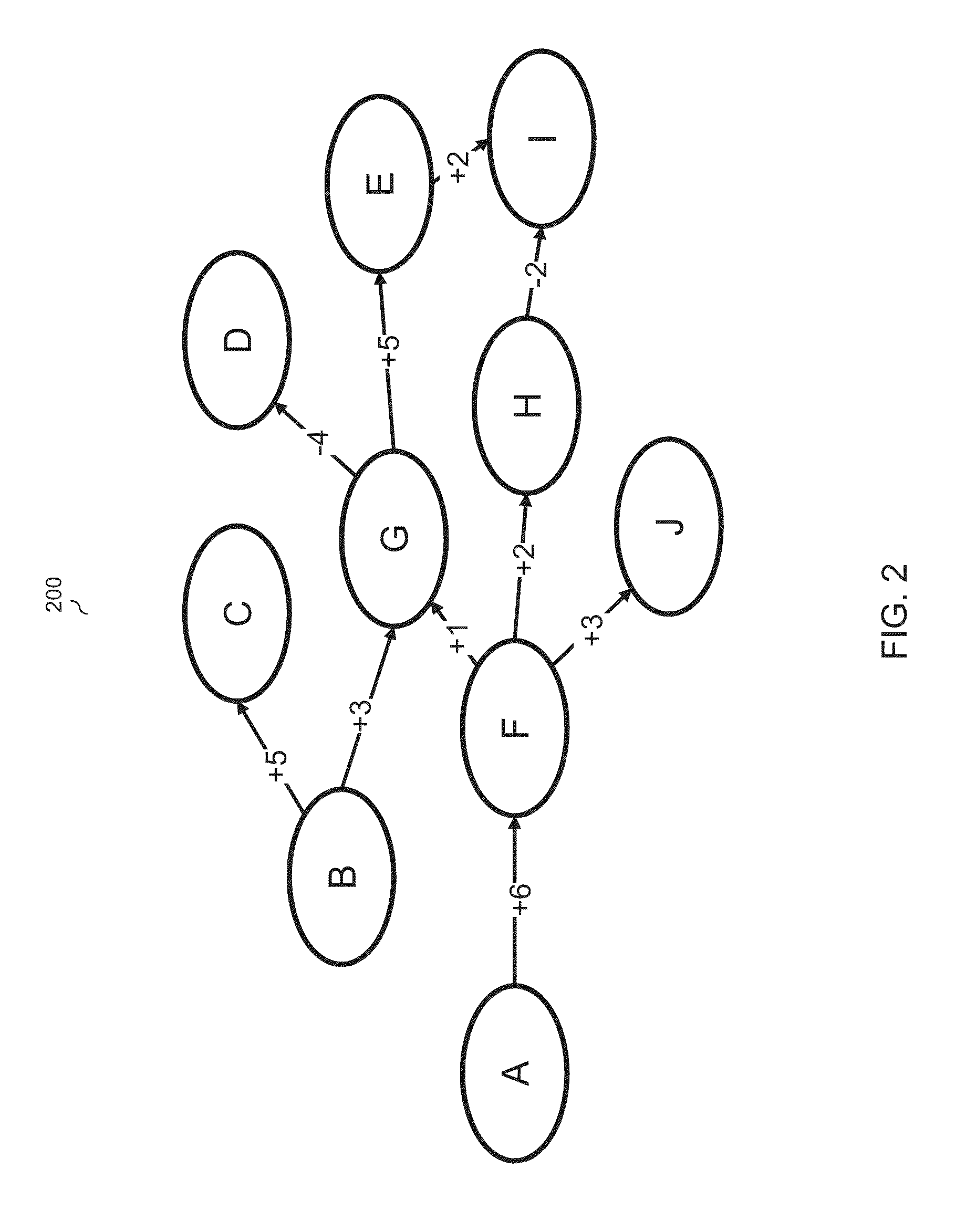System and method for creating a simulation model via crowdsourcing
a crowdsourcing and simulation model technology, applied in the field of systems and methods for transforming causal descriptive models, can solve problems such as slow process, slow process, and unreliable computer simulations created using expert models
- Summary
- Abstract
- Description
- Claims
- Application Information
AI Technical Summary
Benefits of technology
Problems solved by technology
Method used
Image
Examples
Embodiment Construction
[0030]Described are systems and methods for transforming causal descriptive models into digital computer simulation models based on feedback received by crowdsourcing over a network. A digital computer simulation can be used to analyze a subject, as one or more descriptive causal models that can be represented as graphs of nodes connected by edges in a data structure that is interpretable by a computer program, and rendered on a computer display. For example, a subject of a digital computer simulation may be consumer interest in electric cars.
[0031]A node in a descriptive model is a variable that represents a concept such as an action, option or policy that has a range of values. An edge includes a weight that represents a causal association or relationship between two or more nodes. The sign of an edge weight denotes a direction of correlation between nodes, and the magnitude of an edge weight denotes the strength of the causal relationship between the nodes. In some embodiments, d...
PUM
 Login to View More
Login to View More Abstract
Description
Claims
Application Information
 Login to View More
Login to View More - R&D
- Intellectual Property
- Life Sciences
- Materials
- Tech Scout
- Unparalleled Data Quality
- Higher Quality Content
- 60% Fewer Hallucinations
Browse by: Latest US Patents, China's latest patents, Technical Efficacy Thesaurus, Application Domain, Technology Topic, Popular Technical Reports.
© 2025 PatSnap. All rights reserved.Legal|Privacy policy|Modern Slavery Act Transparency Statement|Sitemap|About US| Contact US: help@patsnap.com



